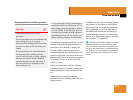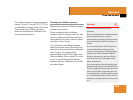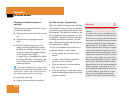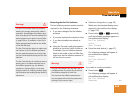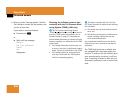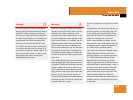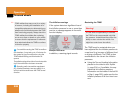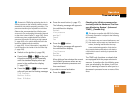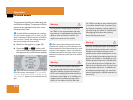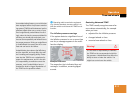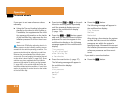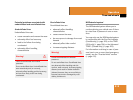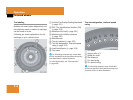
308
Operation
Tires and wheels
Tire inflation warnings
If the system detects a significant loss of
tire inflation pressure in one or more than
one tire, a message appears in the multi-
function display.
Example illustration
In addition, a warning signal sounds.
Restarting the TPMS
The TPMS must be restarted when you
have adjusted the tire inflation pressure to
a new level (e.g. because of different load
or driving conditions). The TPMS is then
recalibrated to the current tire inflation
pressures.
̈ Using the Tire and Loading Information
placard on the driver’s door B-pillar
(
୴ page 296) or, if available, the sup-
plemental tire inflation pressure
information on the inside of the fuel fill-
er flap (
୴ page 283), make sure the tire
inflation pressure of all four tires is cor-
rect.
TPMS malfunctions may occur for a variety
of reasons, including the installation of in-
compatible replacement or alternate tires or
wheels on the vehicle that prevent the TPMS
from functioning properly. Always check the
TPMS malfunction telltale after replacing
one or more tires or wheels on your vehicle
to ensure that the replacement or alternate
tires and wheels allow the TPMS to continue
to function properly.
i
If a condition causing the TPMS to malfunc-
tion develops, it may take up to 10 minutes for
the system to signal a malfunction using the
TPMS telltale flashing and illumination se-
quence.
The telltale extinguishes after a few minutes driv-
ing if the malfunction has been corrected.
i
Operating radio transmission equipment
(e.g. wireless headsets, two-way radios) in or
near the vehicle could cause the TPMS to mal-
function.
Warning! G
It is the driver’s responsibility to calibrate
the TPMS on the recommended cold infla-
tion pressure. Underinflated tires affect the
ability to steer or brake the vehicle. You
might lose control over the vehicle.
୴୴




